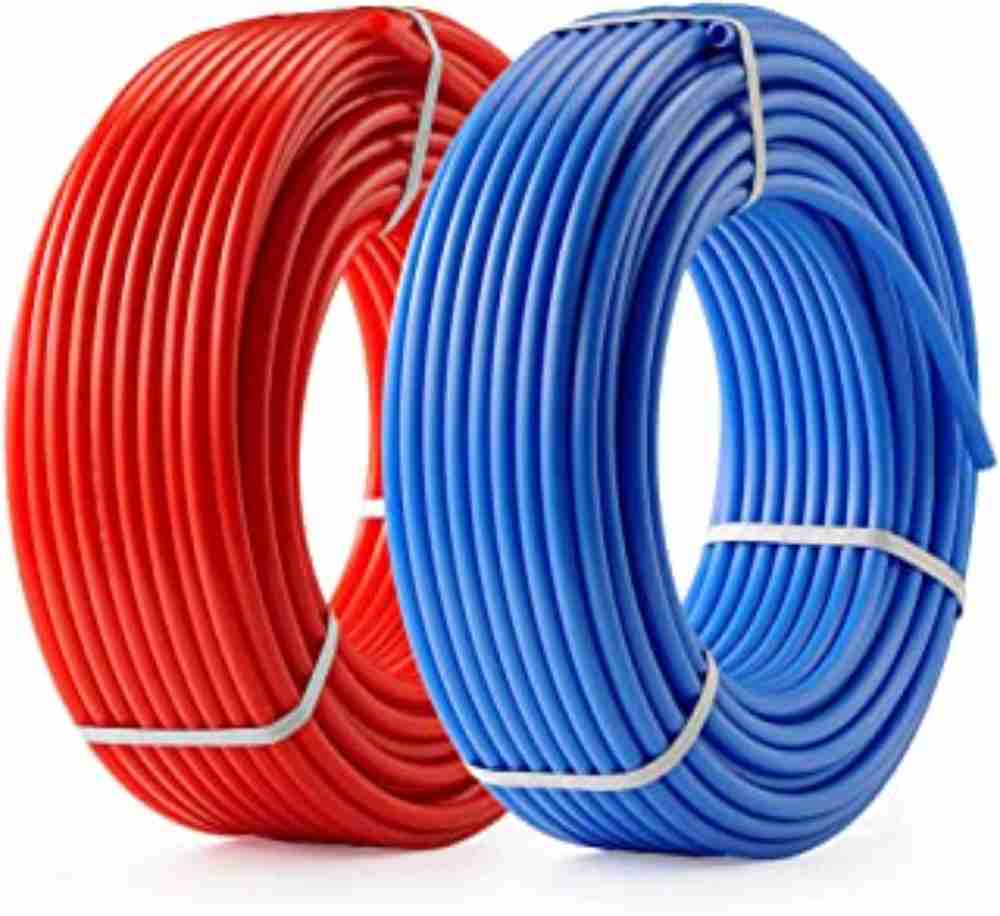
PEX Pipe
PEX pipe is a relatively new building material that is quickly becoming popular with plumbing companies and home owners alike. It's been in use since the 1960's but only in the last twenty years has it really gained traction in the construction industry. Lets explore PEX pipe in more detail.
What Is PEX Pipe
Cross-linked polyethylene, commonly abbreviated PEX, is a form of polyethylene with cross-links. Formed into tubing, it is used predominantly as domestic water piping and under floor radiant heating and cooling systems. PEX pipe is an alternative to polyvinyl chloride (PVC), chlorinated polyvinyl chloride (CPVC) or copper tubing for use as residential water pipes. Almost all PEX used for pipe and tubing is made from high-density polyethylene (HDPE). PEX contains cross-linked bonds in the polymer structure, changing the thermoplastic to a thermoset. Cross-linking is accomplished during or after the extrusion of the tubing. PEX pipe is approved for use in all fifty states.
The History of Water Pipes
In the early to mid 1900's, plumbing pipes were made from galvanized steel. As users experienced problems with the internal build-up of rust, which reduced water volume, these were replaced by copper tubing in the late 1960s. Plastic pipes, CPVC with fittings using glue were used as well in later decades, but came with its own problems, namely becoming brittle and prone to break with age.
Initially PEX pipe was the most popular way to transport water in radiant heating systems from the 1960s onward. Gradually, PEX became accepted for more indoor plumbing uses, such as carrying pressurized water to fixtures throughout the house. Increasingly, in the 2000s, copper pipes as well as plastic PVC pipes are being replaced with PEX. PEX can be used for underground purposes as well as inside our homes.
Most new construction projects now utilize the low cost and high reliability of PEX pipe.
Benefits of PEX Pipe
Cost: PEX pipe costs less than copper pipe. The fittings, like elbows, do cost a little more than the same fitting in copper, but you will need less of them because PEX can easily be bent around corners. Labor dollars are less as well as PEX can usually be installed easier and faster than copper pipe.
Direct Routing of Pipes: PEX can run straight from a distribution point to a fixture without cutting or splicing the pipe. This reduces the need for potentially weak and costly joints and reduces the drop in pressure due to turbulence induced at transitions. Since PEX is flexible, it is often possible to install a supply line directly from the water source to an appliance using just one connection at each end.
Greater Water Pressure: Since PEX pipes typically have fewer sharp turns, there is greater water pressure at the sinks and showers and toilets where it is needed.
Noncorroding: PEX, unlike copper, is not subject to corrosion from minerals or moisture.
Adaptable: PEX can be added to any existing copper or PVC system. Manufacturers make fittings allowing plumbers to join a copper pipe on one end with a PEX line at the other as well as giving options to reduce or expand the diameter of the pipes.
Longevity: The expected lifetime of PEX pipes can be as high as 50 years. In fact, some products are guaranteed for 25 years if installed by a licensed plumber.
Freeze Resistant: Lab tests have shown PEX pipe can freeze and thaw a few times without bursting. It's not freeze proof, nothing is, but has much better protection against freezing than copper pipe.
Drawbacks of PEX Pipe
Sunlight Degradation: PEX should not be stored or installed where it will be exposed to direct sunlight for an extended period of time. This isn't really an issue in our homes as the pipe will usually be either underground or in a wall or crawl space.
Specialty Tools: PEX pipe requires special tools to either expand the pipe end, or install the crimp rings. These tools may be out of the price range of the do-it-yourself home owner.
Popularity
PEX pipe has become the standard in new home construction and is quickly growing in commercial construction as well! Its low cost and high reliability has proven itself time and time again.
INTERESTING TIDBIT
Other items made of PEX include, canoes and kayaks, automotive parts, dental fillings, and even an artificial joint used in hip replacement surgeries!